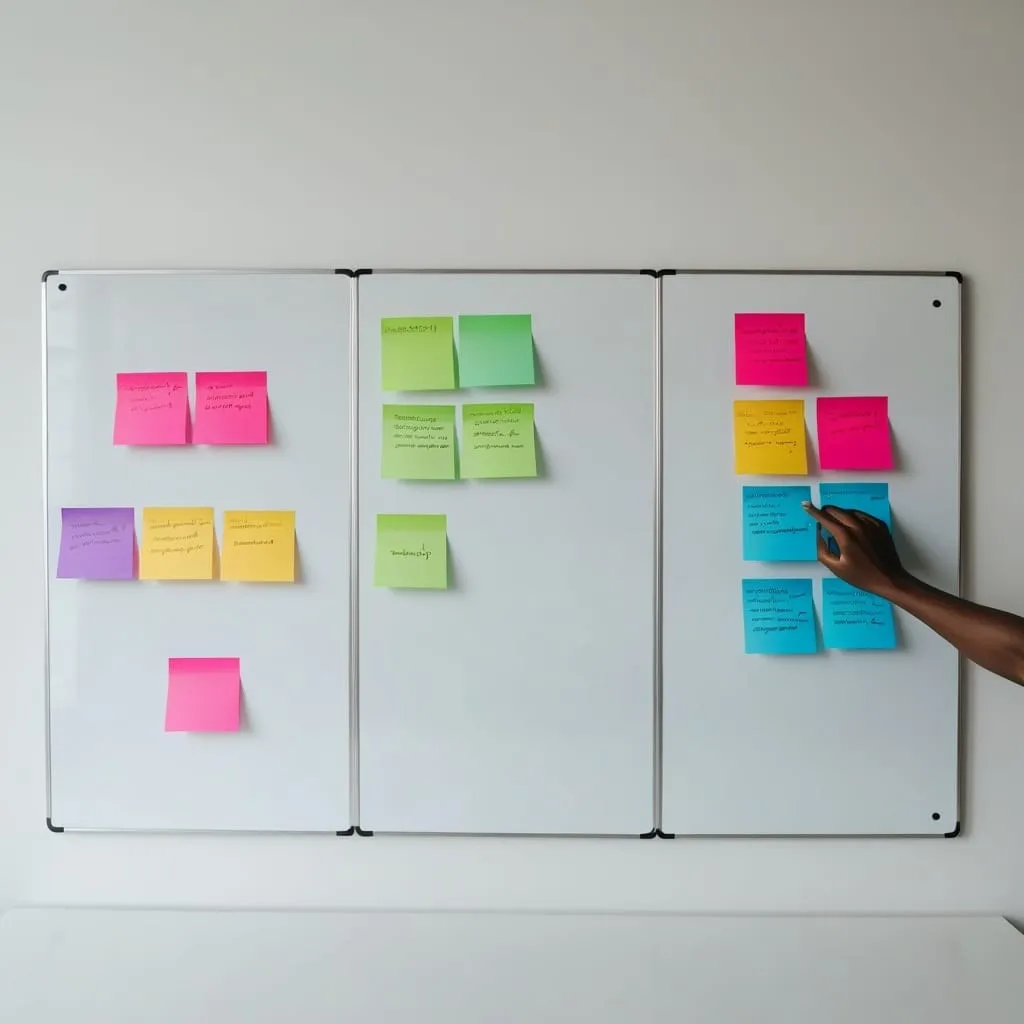Personal Kanban: Mastering Your Workflow in the Modern World
In today's fast-paced world, juggling multiple tasks and responsibilities can feel like a never-ending circus act. Enter Personal Kanban, a game-changing approach to managing your work and life that's taking the productivity world by storm.
At its core, Personal Kanban is all about making your work visible and limiting how much you're tackling at once. It's like having a bird's eye view of your to-do list, but way cooler and more effective.
Picture this: you've got a board (real or virtual) with three main columns - To-Do, In Progress, and Done. Each task is a little card that you move across these columns as you work on it. It's simple, but don't let that fool you. This visual approach taps into our brain's love for images, making it easier to spot what needs doing and what's clogging up the works.
The beauty of Personal Kanban lies in its flexibility. Whether you're planning a home renovation, managing a work project, or just trying to get through your daily chores, this system adapts to your needs. You can use sticky notes on a whiteboard or go digital with specialized software - whatever floats your boat.
One of the coolest things about Personal Kanban is how it helps you focus. We've all been there, trying to juggle a million things at once and ending up dropping all the balls. Personal Kanban says, "Whoa there, buddy! Let's take it one step at a time." By limiting your work in progress, you're forced to focus on completing tasks before starting new ones. It's like giving multitasking the boot and welcoming productivity with open arms.
Let's break it down with a real-life example. Say you're a freelance writer (hello, fellow word nerds!). Your To-Do column might have tasks like "Research article on space travel," "Draft blog post for Client X," and "Proofread last week's work." As you start on the space travel research, you move that card to In Progress. Once you're done, it goes to Done, and you pick up the next task. Simple, right?
But here's where it gets interesting. What if you're halfway through your research and a client emails with an urgent request? In a traditional to-do list, you might be tempted to drop everything and switch gears. With Personal Kanban, you can add the urgent task to your board but finish what you're working on first. This way, you're not constantly context-switching, which we all know is a productivity killer.
Now, let's talk about the elephant in the room - remote work. If you're working from home (and let's face it, who isn't these days?), Personal Kanban can be your new best friend. It helps create structure in an environment where the lines between work and personal life can get blurry.
Imagine you're working remotely and struggling to stay on top of things. Your Personal Kanban board might include both work tasks and personal chores. You could have "Prepare quarterly report" sitting next to "Do laundry" in your To-Do column. As you move through your day, you can easily see what needs doing in both areas of your life, helping you maintain that ever-elusive work-life balance.
But Personal Kanban isn't just about getting stuff done - it's also about understanding your work patterns. As you use this system, you'll start to notice things. Maybe you always have a backlog of writing tasks but breeze through your editing work. This insight can help you plan better, allocate your time more effectively, or even identify areas where you might need to upskill.
Now, I know what you're thinking. "This sounds great, but I'm already using [insert productivity tool here]." The good news is, Personal Kanban plays well with others. You can use it alongside other project management methods or time management techniques. It's like the friendly neighbor of productivity tools - always ready to lend a hand without stepping on anyone's toes.
Let's get practical for a moment. How do you actually set this up? If you're old school (or just love the tactile feel of moving things around), grab a whiteboard and some sticky notes. Draw your columns, write your tasks on the notes, and you're good to go. If you're more of a digital native, there are tons of tools out there. Trello, Asana, and KanbanFlow are popular choices, but even a simple spreadsheet can do the trick.
The key is to make it work for you. Maybe you want to add a "Waiting" column for tasks that are on hold. Or perhaps you want to color-code your tasks based on priority or type. The sky's the limit!
One of the coolest things about Personal Kanban is how it can evolve with you. Starting a new project? Create a new board. Feeling overwhelmed? Add a "Not Now" column to park less urgent tasks. The system grows and changes as your needs do.
But let's be real - no system is perfect, and Personal Kanban is no exception. One common challenge is the temptation to overload your board. Remember, the goal is to limit your work in progress, not create a never-ending list of tasks. Be ruthless in prioritizing and don't be afraid to say no to new commitments if your board is already full.
Another potential pitfall is getting too caught up in the process. Yes, moving tasks across the board is satisfying (admit it, we all love that feeling), but don't let it become a distraction. The board is a tool, not the end goal.
Personal Kanban can also be a great way to collaborate with others. If you're working on a team project, a shared Kanban board can keep everyone on the same page. It's like having a virtual project room where everyone can see what's being worked on and what's coming up next.
For families, Personal Kanban can be a fun way to manage household chores. Kids (and let's be honest, some adults too) love the visual aspect and the sense of accomplishment that comes from moving tasks to the Done column. It's a great way to teach responsibility and time management skills.
At its heart, Personal Kanban is about more than just getting things done. It's about understanding your work, your patterns, and yourself better. It's about reducing stress by making your workload visible and manageable. It's about focusing on what's important and letting go of what's not.
So, whether you're a busy professional trying to juggle multiple projects, a student balancing studies and part-time work, or just someone looking to bring a little more order to the chaos of daily life, Personal Kanban might be worth a try. It's simple enough to start right away but powerful enough to transform the way you work and live.
Remember, the goal isn't to become a productivity machine (although that might happen). The real win is in feeling more in control of your time and tasks, reducing stress, and creating space for the things that really matter to you.
So why not give it a shot? Grab some sticky notes or fire up a digital tool and start your Personal Kanban journey. Who knows? You might just find yourself wondering how you ever managed without it. Happy Kanbaning!






